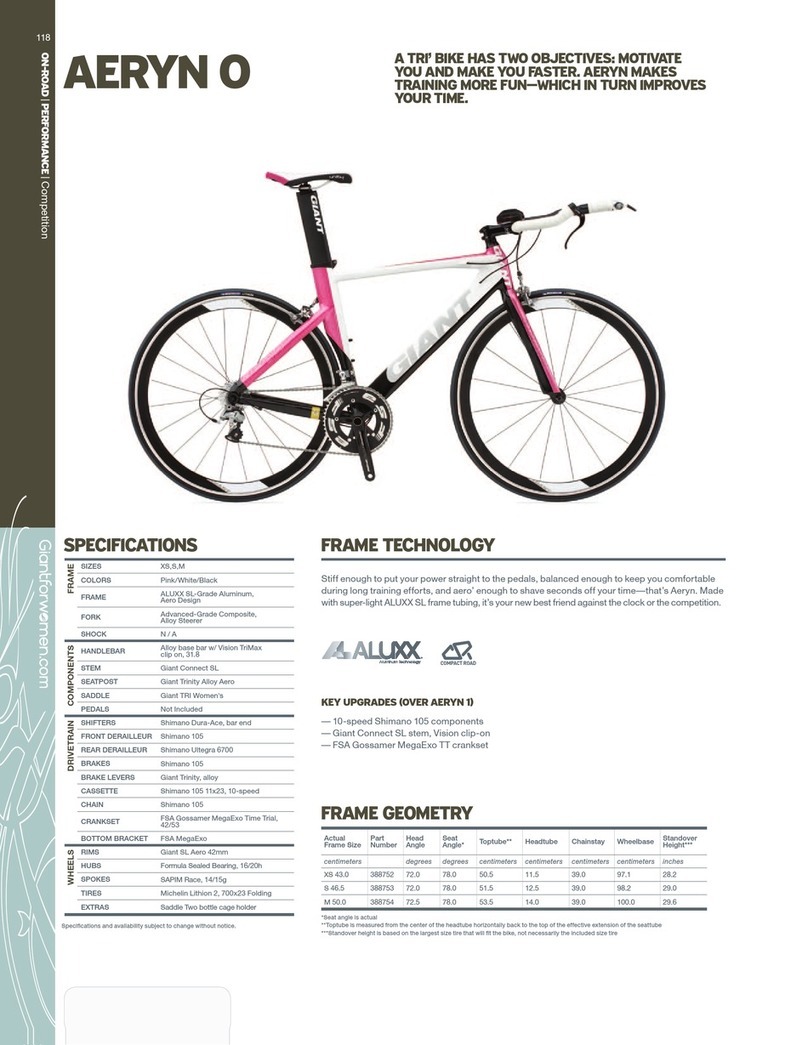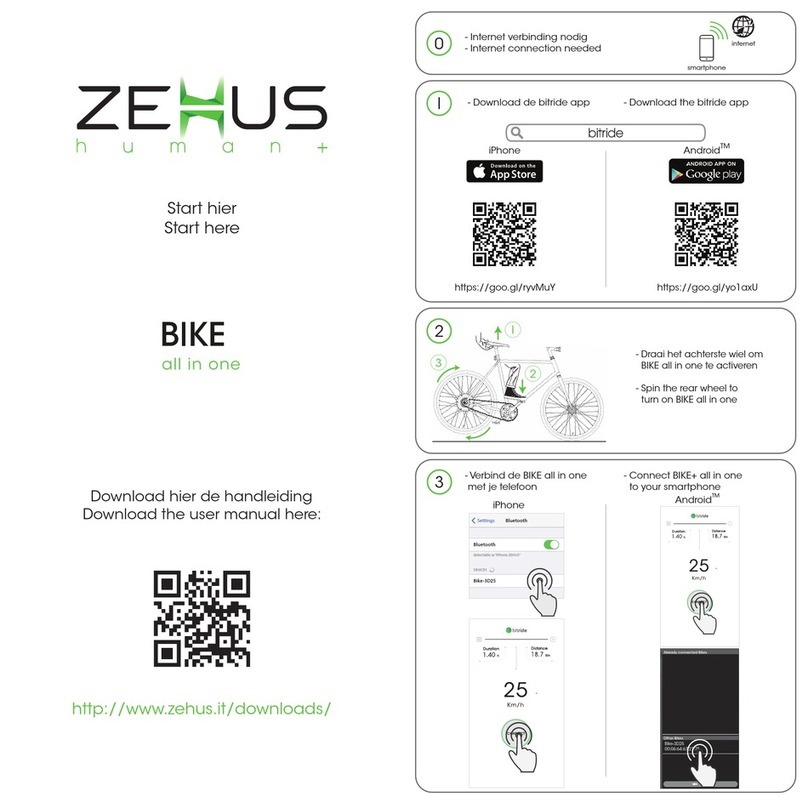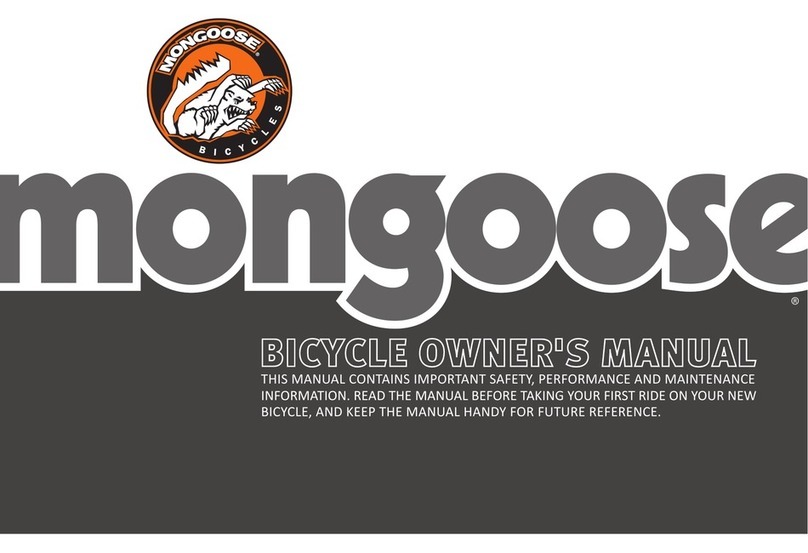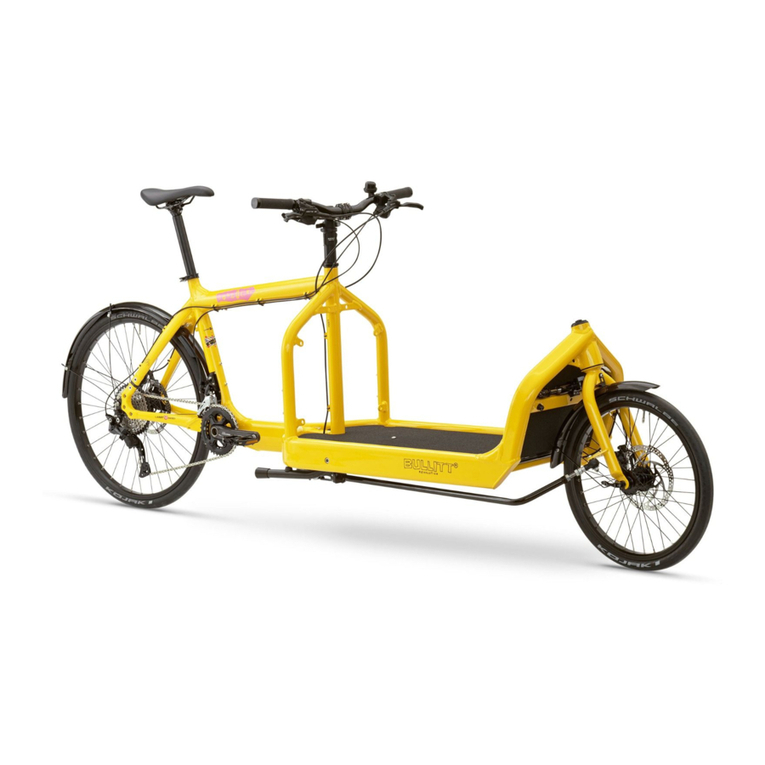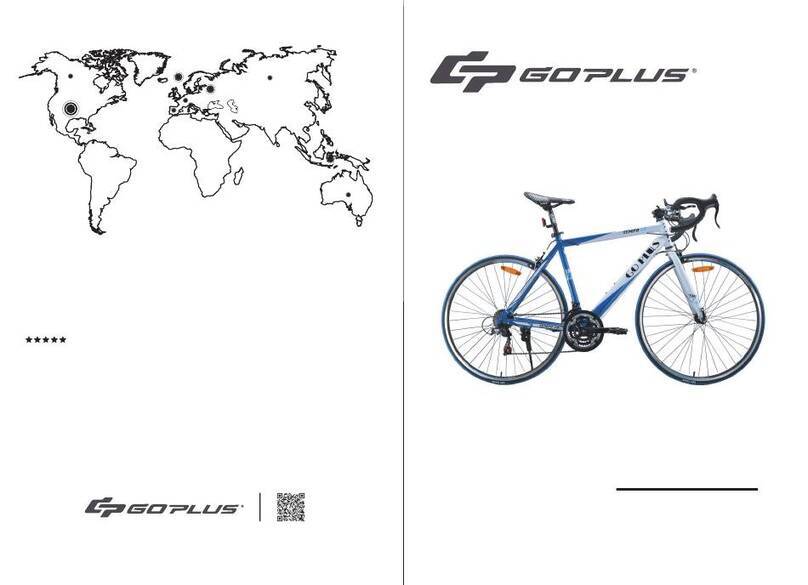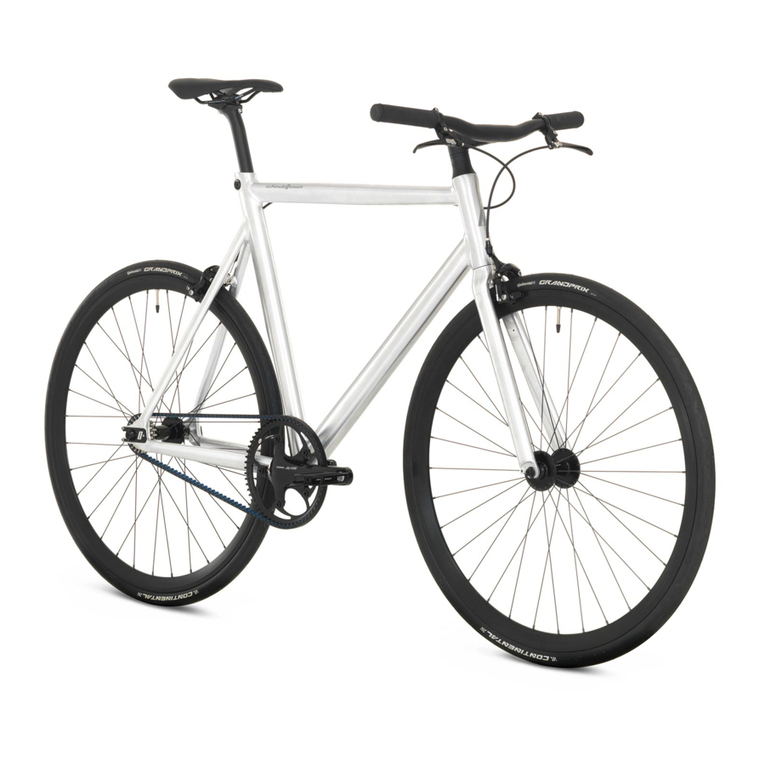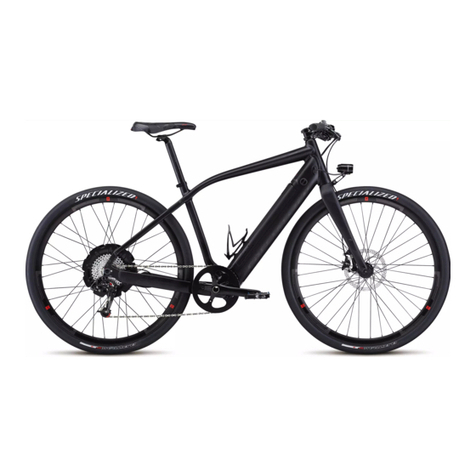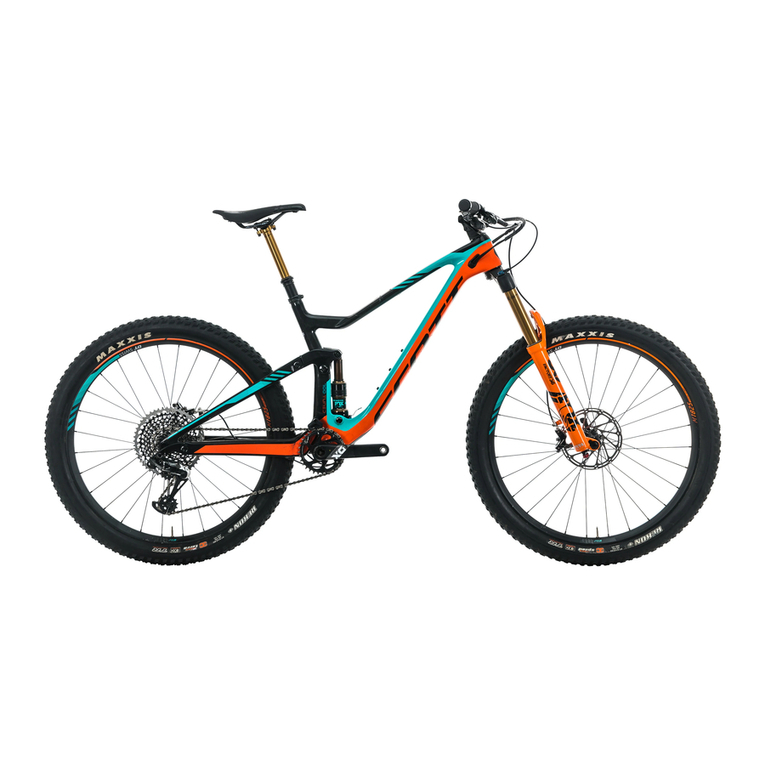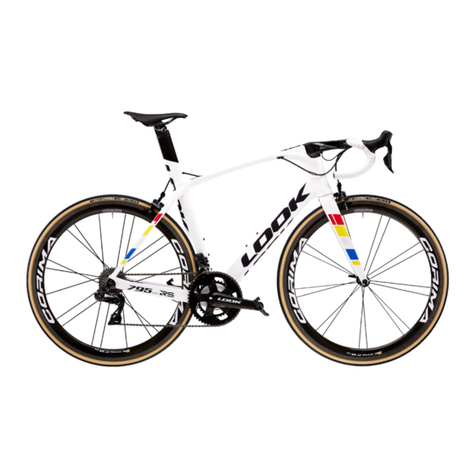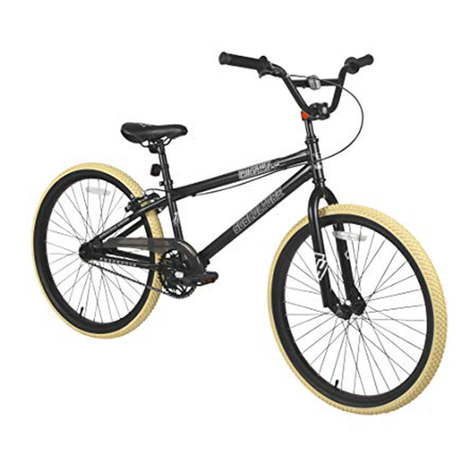Ecoglider RS I User manual

RS I & RS II
User’s Manual

➢About this manual
1. Why you should read this manual…………………………………………...............1
2. Warning, Important safety information...............………………………….......... 2-4
➢Diagram
1. Parts’ diagram with parts name.........................…………………………….........5-7
2. Wiring diagram..............………………………………………………………….........8
➢Operating instruction
1. Important notices…………………………………………………………….......... 9-10
2. Riding mode.........................................................................................................11
3. Riding safely………………………………………………………………..................12
4. Battery charging...................................................................................................13
5. Checking the battery pack before first time use...........................…………..........14
6. Inserting, removing, locking the battery………………………………………..........15
7. Power indicator…………………………………………………………......................16
8. PAS (pedal assist system)…………………………………………………….............17
TABLE OF CONTENTS

9. Throttle (if has)…………..………………………………...........................................18
10. Pedal installation................................................................................................18
11. How to fold the bike(only for folding bike)………………………………...............19
12. Shifter (if has)……………………………………………………….........................20
13. Derailleur system................................................................................................21
14. Front wheel-quick release……….……………………………………....................22
15. Brake adjustment…………………………………………......................................23
16. Rear carrier.........................................................................................................24
17. Light....................................................................................................................24
18. Saddle position...................................................................................................25
➢Maintenance and cleaning................................................................................26-28
➢FAQ..........................................................................................................................28
➢Service &maintenance schedule......................................................................29-33
➢Problems and remedy........................................................................................34-38
➢About dealer and information card.......................................................................39

WHY YOU SHOULD READ THIS MANUAL
This manual is written to help you to get the best performance, comfort, enjoyment and safety when riding your new E-
bike. The manual describes specific care and maintenance procedures that help protect your warranty and ensure years
of trouble free use. Please pay particular attention to the section on battery charging and maintenance.
It is important for you to understand the features and operation of your new E-bike so that you can get maximum enjoyment with
maximum safety. By reading this manual before you go on your first ride, you’ll know how to get the most from your new E-bike.
It is also important that your first ride on a new E-bike be taken under a controlled environment, away from cars, obstacles and
other cyclists.
Cycling can be a hazardous activity even under the best circumstances, Giving Proper maintenance to your E-bike is your
responsibility as it helps to reduce the risk of injury. This manual contains many “Warnings” and “Cautions” concerning the
consequences of failure to maintain or inspect your E-bike. Many of the Warnings and Cautions say “you may lose control and
fall” Because any fall can result in serious injury or even death, we do not repeat the warning of possible injury or death
whenever the risk of falling is mentioned. Please note that those risks are present.
ABOUT THIS MANUAL

Page 1
IMPORTANT SAFETY INFORMATION
Your E-Bike can provide many years of service, fun and fitness-if you take good care of it.
Understand the features of your E-Bike and become aware of the challenges that you will meet on the road. There are
many things you can do to protect yourself while riding. We will offer many recommendations and safety tips throughout this
manual. The following are those that we believe are the most important.
Always Wear A Helmet!
Helmets significantly reduce the possibility and severity of head injuries. Always wear a helmet that complies with your state
laws when riding the E-Bike.
Check with your local police department for requirements in your community.
Do not wear loose clothing that can become tangled in the moving parts of the E-Bike. Wear sturdy shoes and eye
protection. Also check your state laws concerning other protective wear that may be required when riding the E-Bike.
Know your E-Bike!
Your new E-Bike incorporates many features and functions that have never been built into a bicycle before. Read this
manual thoroughly to understand how those features enhance your riding pleasure and safety.
Ride Defensively!
One of the most common cycling accidents is that when the driver of a parked car opens his door into a rider’s path.

Page 2
Another common occurrence is when a car or another cyclist moves suddenly into your path. Always be aware of other
vehicles around you. Do not assume that drivers or other cyclists see you. Get prepared to take evasive action or stop
suddenly.
Make Yourself Easy To See!
Make yourself more visible by wearing bright reflective clothing. Keep your reflectors clean and properly aligned. Signal your
intentions so other drivers and other cyclists can notice your actions.
Ride Within Your Limits!
Take it slow until you are familiar with conditions that you encounter. Be especially careful in wet conditions as traction can
be greatly reduced and brakes less effective. Never ride faster than conditions warrant or beyond your riding abilities.
Remember that alcohol, drugs, fatigue and inattention can significantly reduce your ability to make good judgments and ride
safely.
Keep Your E-Bikes In Safe Condition
Follow the inspection and maintenance guidelines beginning on page_9_. Check critical safety equipment before each and
every ride.
Know The Law
Cyclists are required to follow traffic rules. Additionally, some communities regulate the use of motorized bicycles

Page 3
regarding minimum age requirements and necessary equipment. Check with your local police department for specific
details.
Correct Frame Size
When selecting a new E-BIKE, the proper frame size is a very important safety consideration. Most full sized bicycles come in
a range of frame sizes. These sizes usually refer to the distance between the center of the bottom bracket and the top of the
frame seat tube.
For safe and comfortable riding there should be a clearance of no less than 1-2 inches between the groin area of the intended rider
and the top tube of the bicycle frame, while the rider straddles the bicycle with both feet flat on the ground.
The ideal clearance will vary between types of bicycles and rider preference. This makes straddling the frame when
off the seat easier and safer in situations such as sudden traffic stops. Women can use a men’s style bicycle to
determine the correct size.
.

Page 4
Parts Diagram of Folding E-Bicycle

Page 5
Wiring Diagram

Page 6
Please read and understand these instructions completely before operating your E-bike to prevent serious injury to yourself and
others, and to prevent damage to your E-bike.
IMPORTANT NOTICES
•Always recharge the battery immediately after each use. Failure to do so may damage the battery.
•The charger can remain plugged-in for trickle-charge purposes during long periods of storage.
•For storage periods over 1 month, the battery should be checked and fully recharged before riding.
Helmets
Always wear a properly fitted helmet which covers the forehead when riding an E-BIKE.
Many states require specific safety devices. It’s your responsibility to familiarize yourself with the laws of the state
where you ride and to comply with all applicable laws, including properly equipping yourself and your bike as the law
requires.
Operation Instruction

Page 7
It’s strongly advised that a properly fitted E-bicycle safety helmet be worn at all
times when riding your E-bicycle.
The correct helmet should:
- Be comfortable
- Be lightweight
- Have good ventilation
- Fit correctly
- Cover forehead
Reflectors
Reflectors are important safety devices which are designed as an integral part of your E-bike. Federal regulations require
every bicycle to be equipped with front, rear wheel and pedal reflectors. These reflectors are designed to pick up and reflect
street lights and car lights in a way that helps you be seen and recognized as a moving bicyclist. Checking reflectors and
their mounting brackets regularly to make sure they are clean, straight, unbroken and securely mounted. Replace damaged
reflectors and straighten or tighten any that are bent or loose.
Your E-bike is supplied with one front, one rear wheel reflector,and four pedals reflectors. These are important safety and
legal requirements, and should remain securely fitted and in good, clean condition at all times. Periodically inspect all
reflectors, brackets and mounting hardware for signs of wear or damage. Replace immediately if damange is found. Some
bicycles will require you to install your reflectors onto your bicycle. Please refer to the following section for instructions on all
types of bicycle reflectors.

Page 8
Riding method
Be familiar with all the spare parts of the E-bike and test all the electric functions before riding. Make sure all the spare parts for
the bicycle are in good condition, such as battery power, and tire pressure. The detailed operation is as follows:
Start-up
Insert the key into power switch at the right side of battery box,
turn to “ON” position, if the power display lights on, then power supply is normal.
1.Start-up by accelerator: turn the accelerator towards you(counter-clockwise),
and the rotation angle should be from small to large to start,
then you can adjust speed by turning the accelerator slowly,
the speed can increase to 20km/hour, but the actual speed depends
on weight, road surface, tire pressure and other factors.
2.Start-up by pedal assistance: After turning on the power, you can also use your pedals to start-up the E-bike, then you can
control your speed with accelerator, as well as by pedaling the bicycle faster.
but please do not pedal too hard, in case it may damage the components of e-bike since it is mainly motor driven.

Page 9
RIDING SAFELY
Riding attention on the road
1,Speed should be increased slowly after start-up, in order not to waste energy and damage electrical components, it is much
better start-up with pedal assistance.
2,Please ride with the pedal assistance when climbing hills or steep terrain, in order to prolong the service life of battery and the
motor.
1). While staying safe, try to reduce frequent braking and start-up while riding, in order to save energy.
2). To stop the E-bike, you can release the accelerator by turning clockwise, the speed will slow down and stop.
3). Do not use the accelerator and brake together while riding, you can release the accelerator first, and then brake. In order to
not overload motor or damage other E-bike’s components.
4). Optimum weight is 75kg (including the rider weight), please do not overload.
5). Moreover a rear brake system has been installed to the e-bike, it will automatically cut off power supply to the motor and
slow down when you pull the brake, then the rear brake in the back wheel will stop the E-bike.
Parking attention
1,Shut off the power switch after you get off. In order to prevent accidents caused by inadvertantly by turning accelerator and
starting up the bicycle abruptly.
2.Do not start-up bicycle frequently while stationary, to ensure the service life of battery, motor and electric switch.
3.Shut off the power after parking, and remove the key.

Page 10
Battery charging
When the ride is over or the battery is running out, charge
battery immediately.
Charging methods can be divided into two kinds:
One is to take out the battery then charge, the other is to charge the battery on e- bikes.
Connect the charger plug to the battery charging port and the AC.
Connect to a 100-220V/50-60Hz power source (depending on your region).
There is an LED indicator on the battery charger unit.
The LED is red when the power is connected and the battery is charging.
When the LED turns green, the battery is fully charged.
SLA (sealed lead acid) recommended charging time:6-8hours
Li-LON recommended charging time:5-6 hours
*Do not charge continuously for more than 18 hours.*
After charging, unplug the input plug first (from the outlet), then unplug the output connector (from the bike).
The battery charger must have constant voltage. Fluctuating voltage or fluctuating power supply of any kind may damage
the battery storage cells.

Page 11
Checking the battery Pack before using for the first time
•The battery pack is provided partially charged. To ensure full battery pack capacity, completely charge the battery pack
before using for the first time.
•Distributors should charge the batteries as soon as receiving the E-bike from supplier.
Battery Care
•Even with proper care, rechargeable batteries do not last forever. Every time the battery is discharged and subsequently
recharged, Its relative capacity decreases by a small percentage. You can maximize the life of your battery by following the
instructions in this guide. Battery should be fully charged immediately when they are received for the full recommended
charge times
SLA(sealed lead acid)recommended charging time:6-8hours
Li-LON recommended charging time:5-6 hours
•For a complete,100% charging, leave the battery on the charger for one full hour after the charger indicator light turns green.
•*Never charge batteries for longer than 24 hours*.
•Li-ion batteries do not have a ‘’memory.’’ Partial discharge/charge cycles will not harm the batteries’ capacity or performance.
•The rated output capacity of a battery is measured at 77”F(25”C).Any variation in this temperature will alter the performance
of the battery, and shorten its expected life. High temperatures especially reduce overall battery life &running time.
•Always be sure to turn the bike power switch to “OFF” after each use. If you leave the power switch the “ON” position, or
your E-bike has not been charged for a long period of time, the battery may reach a stage at which it will no longer hold a
charge.
Page 12

Inserting, unlocking and removing the battery
•Insert the key into the keyhole
•Turn the key switch to ON when using the E- bike(C.picture1)
•Turn the key switch to OFF when stopping use of the E- bike(B. picture)
•Turn the key switch to (A.picture1),then the battery is unlocked and removable
Picture 1
Page 13

Power indicator
When the throttle or sensor is engaged (Powering the motor) and the
e-bike is in motion, the LED on the battery gauge(on the throttle or
separate unit) indicate instantaneous line voltage as measured at
the battery terminals - not the available energy in the battery pack.
The line voltage will wing out from a dead stop, or going up a steep
hill, the motor will be under a high load and may show a reduced
number of LED or show the “Yellow” or even ”RED” LED.
When the throttle is disengaged (i.e. no power to the motor due to the
bicycle being Stationary or coasting) LED on the throttle will indicate
the voltage of the battery pack. The voltage of the battery pack will rise
when no load is on the motor. The best indication of how much battery
life is remaining is to check the throttle LED, after reaching cruising
speed, on a flat straight road as this will allow the battery voltage to
stabilize and give a much more accurate reading.
Page 14

This E-bikes have an electric pedal assisted driving system. In EU countries, it is known legally as “PAS” cylce or Pedal Assisted
System.
The driving assisted system consists of a driving unit, a battery, a controller, and various electronic components (harness wires,
sensors and switches). It is important to know that when the assistant system is turned on, the driving unit engages to provide
power only while you are pedaling. The amount of power provided by unit depends on your pedaling force and the assistance
model/level you set with handlebar control unit at any time, if you stop pedaling, the drive assistant will disengage. In all
models/levels, the driving assisted system power reduces progressively and cuts off as the bike reaches a speed of
25km/h,(15.5mph), or sooner if you stop pedaling. The drive assist re-engages when speed drops below 25km/h, (15.5mph) as
long as the pedals are turning.
Page 15
If the e-bike is equipped with mufti-function display (see photo at left.), Which has
3 levels of PAS speed, power indicator on and light on/off..
Keep pressing '-' button to turn off PAS, you can pedal the bike normally. The driving
assistance system is not activated.
Hold the '+' button on meter can get higher PAS speed level. Each level of assist
corresponds to a maximum motor speed; at level 3, the motor runs at full power.
Overall range decrease at higher power levels.

Throttles (If has)
Throttles are equipped on some models of electric bicycles.
Throttles are operated by rotating the throttle towards the rider
much like a motorcycle.
Normally they are the inner half of the right side handlebar grip
and may also contain a battery gauge.
The more you twist the throttle, the faster the motor system
will propel the bicycle.
Pedal installation
Pedals are a pair with “R” & “L” (picture 1), “R” for right, “L” for left.
Tight the pedals with the directive turnings (picture 2).
Remark: R-right;
L-left
Page 16
Picture 1
Picture 2

How to fold the e-bike (Only for folding bike)
1. Turn the key switch to the OFF position.
2. Unlock the handlebar quick release lever (A, Picture 1) and push
down the handlebar to the lowest position, then lock the handlebar
quick release lever.
3. Unlock the handlebar quick release lever (A, Picture 2) and rollover
The handle bar.
4. Rotate the pedal upward so it is perpendicular to the ground
(A, Picture 3).
5. Release the lock lever from its clasp on the right side of the E-Bike
(A, Picture 4).
6. Rotate the lock lever (A, Picture 4) clockwise until it points backward
Pull the locknut and rotate the locknut (A, Picture 4) out away from the
E-bike until the nut clears the lock plate (B, Picture 4).
7. Grasp the seat and the handlebar. Pivot the front half of the frame
rearward around the hinge until the front wheel is beside the rear wheel (Picture 5).
Page 17
Picture 1
Picture 3 Picture 4
Picture 2
This manual suits for next models
1
Table of contents

